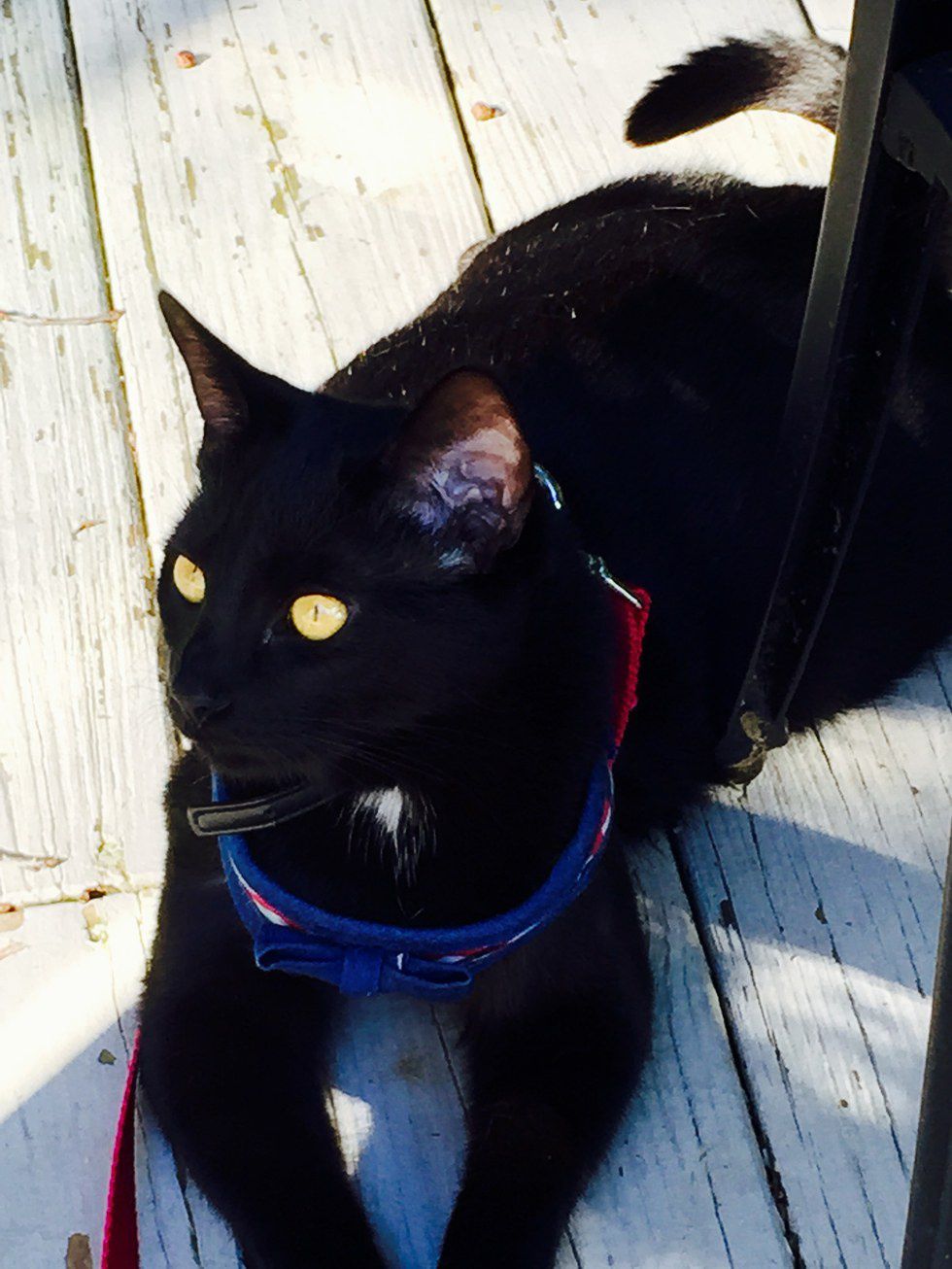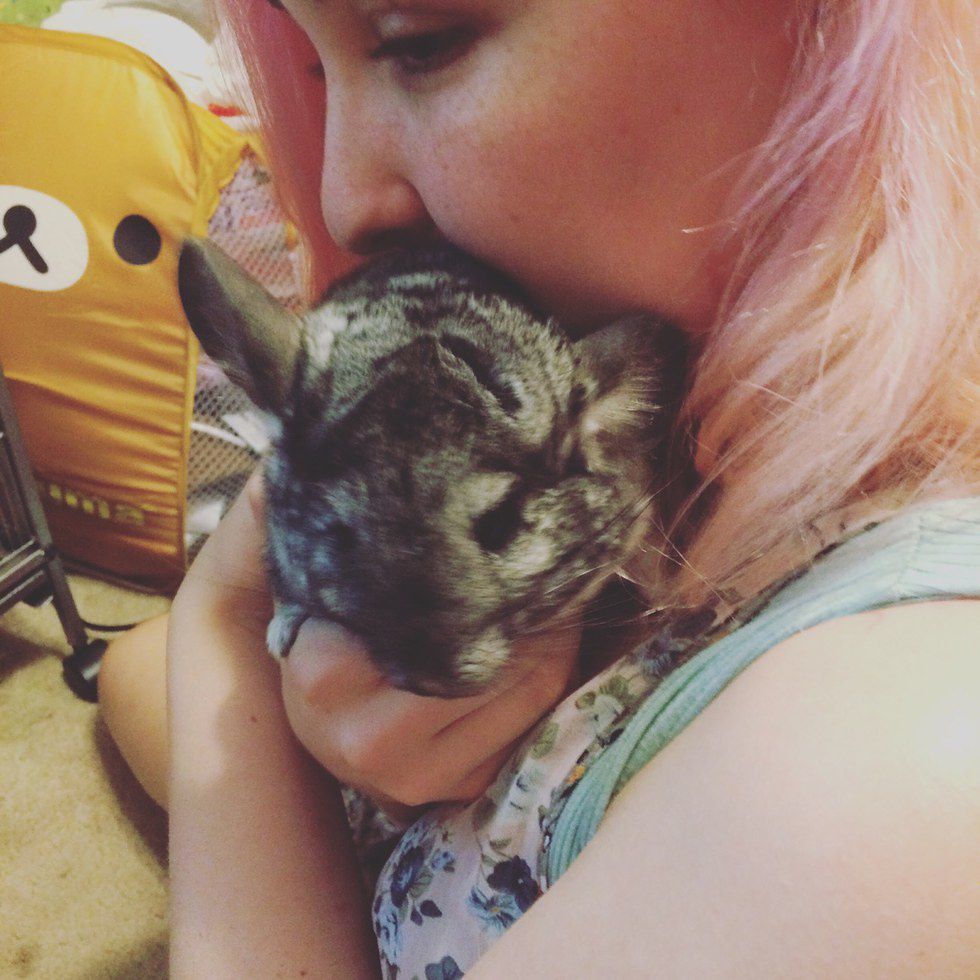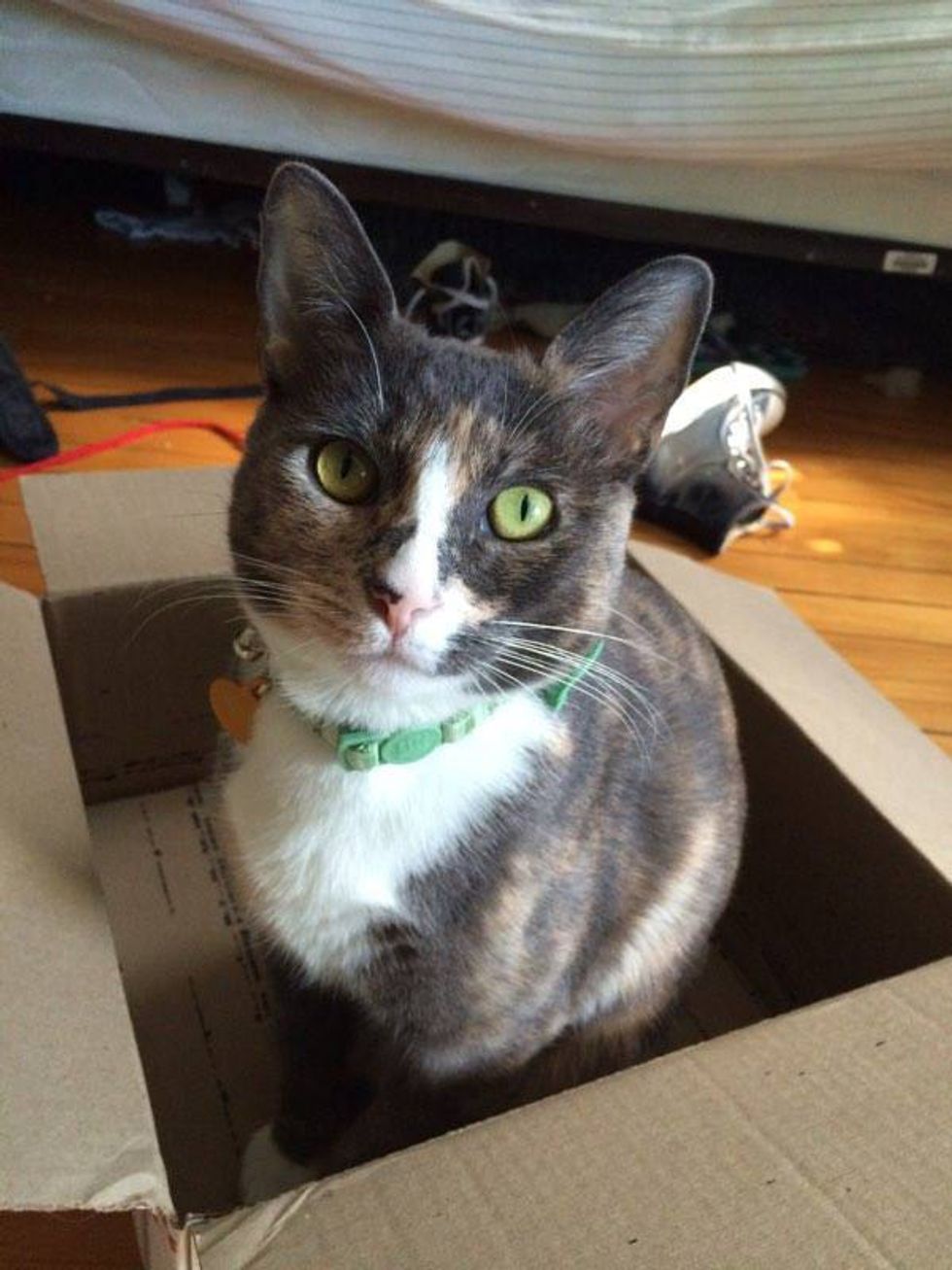It’s March of 2016 and I stand outside my dorm building just as the sun comes over the mountains. Hollins University is covered in a sheer layer of frost and I am bundled up in an array of coats. One hand is deep in my pocket, searching for body heat, and the other is gripping the green leash tethering me to my dog. She wanders off into the grassy area between the dormitory and the road, squatting and sniffing and not minding the icy dew sticking to her paws.
This is the usual routine.
I bristle as a white SUV drives down the road and slows as it passes us, then brakes. The blue decal on the passenger side door tells me it’s one of the security patrols and I relax a bit. The window rolls down and I can see the driver, a woman, blonde and middle aged, looking at me, then Lola, then back at me.
“Pretty dog,” she says.
“Thank you,” I say.
“Is it yours?”
“Yes.”
“Are you a student?”
“Yes.”
“Is your dog allowed in the dorm?”
“Yes.”
“Did you get her registered through Housing and Residence Life?”
“Yes.”
“So if I go check with them they’ll say it’s okay for you to have a dog in your dorm?”
“Yes, she’s an ESA.”
The security officer just nods and rolls up her window, driving away slowly. I pull Lola in from the grass and she joins me at the door. I swipe my key card and feel the rush of warm air as we go back inside.
This, too, is a usual routine.
An ESA is different from a service animal or a therapy animal.
A service animal is trained, usually from birth, to perform specific tasks to aid a disabled person’s mobility and minimize their struggle. For example, a person with a visual impairment can use a seeing-eye dog, or a person who has diabetes or seizures can use an alert dog who can tell them when they are about to have an episode so they can go to a safe location.
A therapy animal is one who has been trained to work at and is tied to an institution, like a hospital or nursing home. These animals usually just there to provide a comforting presence and are often used to raise awareness of the groups and disabilities they help mitigate.
An ESA, or emotional support animal, is a unique mixture of a service and therapy animal. They can be any range of animals, from dog or cat to miniature horse or rabbit. An ESA doesn’t need to undergo specialized, lifelong training like a service animal; the ESA just needs to be able to behave well in the environments wherein it works. For a person to need an ESA, they must have some form of medically verifiable physical, psychiatric, or intellectual disability, the animal must prove they can help alleviate the symptoms of that disability.
“The major difference [between a pet and an ESA],” says Jade, Hollins University class of 2017, “is that a pet is because you want one and an ESA is because you need one for your mental and emotional well being. ESAs help people feel better. If pets are vitamins, and like they’re good for everyone, then ESAs are as my girlfriend would say, prescribed meds, and therefore only for the people who truly need them.”
I have had my dog, Lola, for 10 years and now, in my sophomore year of college, I have her as my emotional support animal.
It is August 2016 and my father and I sit on a couch inside a store in downtown Roanoke as my mother hunts for new shoes. Lola sits by my feet, the fabric of her bright red vest slightly stiff around her ribcage. I lean over and adjust it and she wags her tail. A pair of strange women nearby burst into a chorus of oohs and ahhs.
The woman closest to us sits down in the narrow space on the couch next to me, her legs touching mine, and pats Lola with her long, spindly hands. She looks at the vest and reads the patch aloud, saying, “Emotional… Support…. Dog.”
“Yep,” I say. Lola steps closer to the woman, tilting her head so the woman can itch the spot just above her ears. Unlike me, she isn’t very shy around strangers. It’s part of her job.
“So what is she for?”
I look at the woman, who is smiling at Lola.
“I’m sorry?”
“What does she do?”
I fumble over my words. I can’t tell this woman I just met that I have major depression, or generalized anxiety disorder, or posttraumatic stress. I can’t tell her that her body pressed up against mine on that couch makes me uncomfortable, or that she really shouldn’t pet a working dog without asking first. I can’t just say that I take my dog into public so that I don’t feel like I can’t breathe when people get too close to me, or so that I don’t feel paranoid when a man looks at me, or so I don’t feel urges to step into oncoming traffic.
I am too slow to respond, and the woman asks, “Is she just here to give you extra love?”
“Sure,” I say with a defeated shrug.
The woman laughs and scratches behind Lola’s ear. “I could use an emotional support animal then.”
There has been a recent surge of people without disabilities claiming their pets are ESAs. This happens for a variety of reasons, from a person wanting “extra love,” to a student willing to lie in order to get their pet to live with them at college. But, by registering their pets as emotional support animals, people can take advantage of the loopholes that allow animals to go places pets normally wouldn’t be allowed. ESAs with vests can be let into public stores. Renters don’t have to pay extra fees and can avoid breed restrictions, since landlords can’t charge extra money for disabled people’s service animals or ESAs. And airlines allow ESAs on planes for free as long as certain paperwork and documentation is presented to the proper authorities.
Fake ESAs aren’t guaranteed to have good behavior like real ESAs, and not only pose a risk to public safety but also create a skeptical environment for real disabled people with real working animals.
“They are abusing a system that wasn't built for them.” says Bailey, Virginia Commonwealth University class of 2020 student and owner of his emotional support dog Castiel. “I get that animals are important to overall health, but Castiel isn't just an animal. He serves a function in my life more than just a companion. He provides a service that I actually cannot live without.”
College campuses are particularly susceptible to fake ESAs, since it is normal for students to feel homesick and overwhelmed and in need of support. Class of 2018 Hollins University student Nia has had encounters with people who seek to have fake ESAs. She says, “I've had experiences of people not understanding that Avada is doing a job and talk about the steps they should take to have their pets here too. Not their ESA's, their pets. They usually stop asking questions when I tell them that they need to get confirmation from a psychiatrist that they'll benefit from an ESA.”
The amount of paperwork that is required for most universities to accept ESAs can be enough to discourage able-bodied and able-minded people from attempting to register their pets, but it can also be a difficult process for disabled students.
“It was hard enough getting the animal I do need,” says University of Maryland Baltimore County student, class of 2020, Rachel, who has an exotic animal as an ESA. “So I don’t like that people are abusing this sort of arrangement and making actually ill people have to jump through more hoops because colleges are getting both real and fake cases and need to be more skeptical.”
Despite the skepticism I still sometimes face from security officers and neurotypical students alike, my university is overall accommodating to letting me have Lola. I submitted her paperwork months before I had even moved into campus, just to be sure she would be legitimate. The head of Housing and Residence Life approved her in August, 2015. Lola didn’t join me until late January, 2016, not until after my turbulent first semester was over.
Like a lot of other ESA owners, having an animal to take care of rapidly improved my health. I went from sleeping all day to going on long walks early in the morning. I would leave campus for the occasional Petsmart run instead of being fearful to leave my dorm. I’ve been incredibly lucky to have the perfect dog for dorm life and travel. Lola is just small enough to fit us both comfortably on a twin bed. She isn’t the most active, especially now in her old age (she just turned 10 years old, so we’ve been together for half my lifetime), but she does enjoy fetch with her rope toy in the evenings. Otherwise, she is content napping, looking out the window, and staring at my roommate the rest of the day when I’m not around.
When speaking with Nia about her emotional support cat Avada, I resonated strongly with one thing in particular: “She gives me a reason to get up in the morning because I have to take care of her and make sure she's okay. When I have anxiety or need some physical comfort, I can go to her for help.”
For people with disabilities, ESAs needs don’t stress or burden them, but actually provide the amount of stimulation and routine needed to stay healthy. Despite the struggles of taking care of her chinchilla, Aefa, Rachel still feels grounded in the duties of an animal owner. “[Aefa is] a fluffy, charming distraction,” she says, “and she has such a little life that is in my hands, that I have to take care of, and I’m reminded every day that she needs me as much as I need her so I need to do my part and stick around and I can’t afford to shut down like I might have done in the past because now we’re a team.”
“Castiel has always had this innate ability to know what I'm feeling. When it shifts into depression, anxiety, panic, or the like, he's always running to my side to help me out,” says Bailey about his dog. “I find comfort in taking care of him and knowing that he depends on me. That gives me responsibility and that helps me get out of bed in the morning, get ready for the day, and even get outside to take a walk. My self-care always starts with taking care of Castiel.”
It’s fall semester of 2016. I lay asleep in my bed in my dorm room, but in my nightmare I am in a dark basement. I toss my head as I dream of cold fingers around my wrist and my body pinned down. Vivid flashes of memory, the same horrible memory that replays over and over in my head every day, hit me in waves. I choke on shallow breaths and begin to sob.
My roommate is startled awake and comes to my side, firmly shaking me from my sleep, and though I realize I am in my dorm, safe from harm, my heart still pounds in my chest. My mind is the needle on a broken record. My sheets are soaked with sweat. My body refuses to let me relax. Then my dog, my Lola, comes from her spot by my feet to rest by my head. She taps her paw to my back and, when I turn to face her, she licks my wet face. It’s then that I can uncoil my muscles, lay back onto the bed and, with Lola’s warm breath on my cheek, go back to sleep.
Special Thanks:
Jade, Hollins University, and California, age 2
Rachel, University of Maryland Baltimore County, and Aefa, age 1.5
Nia, Hollins University, and Avada, age 2
Bailey, Virginia Commonwealth Student, and Castiel, age 5
and Lola, my angel, age 10


























